How to Grow Tamarind
- March 28, 2024
- 0 comment
Discover how to grow Tamarind, a guide to cultivating the Tamarindus indica tree, known for its tangy fruit pods and originating from Africa. This article covers all essential steps from planting to harvesting, helping you successfully nurture this tropical tree.

| Benefit | Description |
|---|---|
| Rich in Nutrients | Tamarind is a good source of vitamins (like Vitamin C and B-vitamins), minerals (such as magnesium, potassium, iron), dietary fiber, and antioxidant compounds. |
| Digestive Health | The dietary fiber in tamarind helps in digestion and can alleviate constipation. It also possesses laxative properties. |
| Heart Health | Tamarind can help lower cholesterol levels and blood pressure, contributing to overall heart health. |
| Anti-inflammatory Effects | The antioxidants in tamarind can reduce inflammation in the body, which is beneficial for conditions like arthritis. |
| Weight Management | Tamarind has been linked to weight control, possibly due to its fiber content and the ability to reduce fatty acid synthesis. |
| Blood Sugar Control | Some studies suggest that tamarind might help in managing blood sugar levels, though more research is needed. |
| Liver Protection | Tamarind has hepatoprotective properties, helping in protecting the liver. |
| Skin Health | Its antioxidants and vitamins can promote healthy skin and may aid in treating certain skin conditions. |
| Immune System Support | The high Vitamin C content in tamarind boosts the immune system and can help fight off infections. |
List on How To Grow Tamarind
- Choosing the Right Location
- Planting Tamarind
- Caring for Your Tamarind Tree
- Pest and Disease Management
- Harvesting Tamarind
Choosing the Right Location

Climate Requirements for Tamarind
- Temperature Range: Tamarind trees thrive in a temperature range of 20°C to 35°C (68°F to 95°F). They are adapted to warm climates and are often found in regions that experience hot summers.
- Frost Sensitivity: Tamarind trees are sensitive to frost and cold weather. Temperatures below freezing can damage or even kill the tree. This makes them unsuitable for regions with harsh winters.
- Sunlight: These trees require full sunlight for optimal growth and fruit production. They should be planted in a location that receives direct sunlight for most of the day.
- Rainfall: Tamarind trees can tolerate periods of drought once established but grow best with regular rainfall. However, they don’t do well in areas with excessive rainfall or waterlogged conditions.

Soil Preferences for Tamarind
- Soil Type: Tamarind trees are adaptable to a variety of soil types but prefer deep, well-draining soils. Sandy or loamy soils are ideal as they prevent waterlogging and allow proper root development.
- Soil pH: The optimal pH for tamarind trees is neutral to slightly acidic. They can tolerate a pH range from 4.5 to 9.0, but growth is best around 6.0 to 7.5.
- Drainage: Good drainage is crucial for tamarind trees. Poorly draining soils or standing water can lead to root rot and other diseases.
- Soil Depth: Deep soils are beneficial as they provide space for the extensive root system of the tamarind tree to spread out. This is particularly important for nutrient absorption and tree stability.
Planting Tamarind
Propagation
- From Seeds: Most commonly, tamarind trees are grown from seeds. This is a straightforward method, but the resulting trees can show a lot of genetic variability. This means the fruit quality and tree characteristics can vary significantly from the parent tree.
- Grafting: To maintain specific characteristics, such as fruit quality, size, or tree growth habit, tamarind trees can be grafted. This involves taking a branch or bud from a desired tamarind tree (the scion) and attaching it to the root system of another tree (the rootstock). Grafted trees tend to bear fruit sooner than those grown from seeds.

Seed Preparation
- Soaking: The hard, protective shell of the tamarind seed can impede water absorption, which is crucial for germination. Soaking the seeds in water for 1-7 days (changing the water daily) can soften the shell, making it easier for the embryo inside to sprout.
- Scarification: Some gardeners also use a technique called scarification to help the seeds germinate. This involves gently nicking or sanding the seed coat to make it more permeable to water.
Planting
- Depth and Spacing: When planting tamarind seeds or seedlings, it’s important to give them enough space to grow. They should be planted about 2-3 inches deep in the soil. The spacing between trees is critical, especially considering the mature size of tamarind trees. A minimum spacing of 25 feet is recommended to avoid overcrowding and to ensure each tree receives adequate sunlight and air circulation.
- Site Selection: Choose a planting site where the tree will receive full sun. The location should also have well-draining soil to prevent waterlogging, which can harm the tree’s roots.
- Initial Care: After planting, the soil should be kept consistently moist but not waterlogged. Mulching around the base of the tree can help retain soil moisture and regulate soil temperature.
Caring for Your Tamarind Tree
Watering
- Young Trees: In the early stages of growth, it’s important to maintain a consistent watering schedule. Tamarind saplings require regular moisture to establish a strong root system. Water the young trees deeply and regularly, but be careful not to over-water, as tamarind does not like waterlogged conditions.
- Mature Trees: Once established, tamarind trees are remarkably drought-tolerant. However, for optimal growth and fruit production, they benefit from deep watering during prolonged dry spells. It’s recommended to water mature trees deeply but infrequently, ensuring the soil has time to dry out between waterings.
Fertilizing
- Fertilizer Type: A balanced fertilizer (like a 10-10-10 NPK formula) is suitable for tamarind trees. Organic options like compost or well-rotted manure can also be beneficial.
- Application: Apply fertilizer during the growing season, typically in the spring and summer. Avoid fertilizing late in the season as this can stimulate new growth that may be damaged by cooler temperatures.
- Frequency: Young trees benefit from more frequent fertilization, about two to three times during the growing season. For mature trees, fertilizing once at the beginning of the growing season is usually sufficient.
Pruning
- Best Time to Prune: The ideal time for pruning tamarind trees is in late winter or early spring before new growth starts.
- Shaping: Regular pruning helps in shaping the tree and controlling its size, which is particularly important if space is limited.
- Health and Air Circulation: Remove any dead, diseased, or crossing branches to maintain the health of the tree. Pruning also enhances air circulation and sunlight penetration, which are crucial for the tree’s overall health and fruit production.
- Safety and Accessibility: If the tree grows too tall, it can be pruned to keep it at a manageable height, making it easier and safer to harvest the fruit.
Pest and Disease Management
Pest Management
- Aphids:
- Description: Small, soft-bodied insects that can be green, yellow, black, brown, or red. They tend to cluster on new growth and under leaves.
- Impact: Aphids suck sap from the plant, weakening it and causing leaf curling and deformation.
- Control: Use a strong water spray to dislodge aphids, introduce natural predators like ladybugs, or apply insecticidal soap or neem oil.
- Scale Insects:
- Description: Small, hard-shelled insects that attach themselves to the stems and leaves.
- Impact: Scale insects suck plant juices, weakening the tree and causing yellowing of leaves.
- Control: Manual removal, application of horticultural oil, or introducing natural predators such as parasitic wasps can help control scale populations.
Disease Management
- Fungal Diseases:
- Examples: Powdery mildew, root rot, and leaf spot.
- Symptoms: White powdery substance on leaves (powdery mildew), dark spots on leaves (leaf spot), soft, rotting roots (root rot).
- Prevention and Control:
- Ensure good air circulation around the tree by proper pruning and spacing.
- Avoid overhead watering to prevent moisture accumulation on leaves.
- Ensure proper drainage to avoid waterlogging, which can lead to root rot.
- Remove and destroy affected plant parts. Use fungicides as a last resort, following label instructions.
Harvesting Tamarind
Maturation Signs
- Color Change: As tamarind pods mature, they transition from a green to a brown color. This is a primary indicator that the pods are nearing readiness for harvest.
- Shell Texture: The shell of the tamarind pod will start to become brittle and dry as it matures. This change in texture is a clear sign that the pod is ready to be picked.
- Seed Rattling: In fully mature pods, if you gently shake them, you can sometimes hear the seeds rattling inside. This is because the flesh inside the pod shrinks away from the seeds as it dries.
Harvest Technique

- Gentle Twisting: When harvesting tamarind, use a gentle twisting motion to detach the pods from the branches. This technique helps in avoiding damage to both the tree and the fruit.
- Using Pruners: For pods that are difficult to reach or are stubbornly attached, use a pair of pruning shears to carefully cut them from the branch.
- Collecting Fallen Pods: Sometimes, fully mature pods may fall to the ground. Regularly check the area under the tree and collect these pods to prevent them from spoiling.
Post-Harvest Handling

- Cleaning: After harvesting, clean the pods to remove any dirt or debris.
- Drying: If further drying is needed, lay the pods out in a warm, dry, and well-ventilated area. This helps in preserving them for longer periods.
- Storage: Store the dried tamarind pods in a cool, dry place. They can be kept in airtight containers to extend their shelf life.
Conclusion
Growing tamarind can be a rewarding experience for any gardener with the right climate and patience. Its unique flavor and nutritional benefits make it a valuable addition to any garden. With proper care, your tamarind tree can provide delicious fruits for years to come.
FAQs (Frequently Asked Questions)
- What climate is best for growing tamarind?
- Tamarind grows best in tropical and subtropical climates. It requires temperatures between 20°C and 35°C (68°F and 95°F) and cannot withstand frost.
- Tamarind grows best in tropical and subtropical climates. It requires temperatures between 20°C and 35°C (68°F and 95°F) and cannot withstand frost.
- Can I grow tamarind from seeds?
- Yes, tamarind can be grown from seeds. Soak the seeds in water for a few days to soften the hard shell, then plant them in well-draining soil.
- Yes, tamarind can be grown from seeds. Soak the seeds in water for a few days to soften the hard shell, then plant them in well-draining soil.
- How long does it take for a tamarind tree to bear fruit?
- A tamarind tree grown from seed typically starts bearing fruit in 6 to 7 years. Grafted plants may bear fruit sooner.
- A tamarind tree grown from seed typically starts bearing fruit in 6 to 7 years. Grafted plants may bear fruit sooner.
- How much water does a tamarind tree need?
- Young tamarind trees require regular watering. Mature trees are drought-resistant but benefit from occasional deep watering, especially during long dry periods.
- Young tamarind trees require regular watering. Mature trees are drought-resistant but benefit from occasional deep watering, especially during long dry periods.
- What type of soil is suitable for tamarind?
- Tamarind trees grow well in a variety of soil types, but they prefer deep, well-draining sandy or loamy soil with a neutral to slightly acidic pH.
- Tamarind trees grow well in a variety of soil types, but they prefer deep, well-draining sandy or loamy soil with a neutral to slightly acidic pH.
- Does tamarind require pruning?
- Yes, pruning is recommended to shape the tree, improve air circulation, and remove dead or diseased branches.
- Yes, pruning is recommended to shape the tree, improve air circulation, and remove dead or diseased branches.
- How do I fertilize a tamarind tree?
- Use a balanced fertilizer during the growing season. Avoid over-fertilizing, as it can lead to excessive foliage at the expense of fruit production.
- Use a balanced fertilizer during the growing season. Avoid over-fertilizing, as it can lead to excessive foliage at the expense of fruit production.
- What are common pests and diseases that affect tamarind trees?
- Tamarind trees can be affected by pests like aphids and scale insects, and diseases such as fungal infections. Regular monitoring and proper tree care can mitigate these issues.
- Tamarind trees can be affected by pests like aphids and scale insects, and diseases such as fungal infections. Regular monitoring and proper tree care can mitigate these issues.
- When is the right time to harvest tamarind pods?
- Harvest tamarind pods when they turn brown and the shell becomes brittle, usually between late spring and early summer.
- Harvest tamarind pods when they turn brown and the shell becomes brittle, usually between late spring and early summer.
- Can tamarind be grown in containers?
- Yes, tamarind can be grown in large containers, especially when young. However, its growth may be limited compared to planting it in the ground.

Kristine Moore
Forestry AuthorI'm Kristine Moore, a seasoned garden landscaping professional with over 30 years of experience. My extensive career has been dedicated to transforming outdoor spaces into stunning, sustainable landscapes. With a deep understanding of horticulture, design principles, and environmental stewardship, I have become a respected figure in the field, known for creating harmonious, visually appealing, and eco-friendly gardens. My commitment to excellence and continuous learning in landscaping trends and techniques has solidified my reputation as an expert in garden design and implementation.



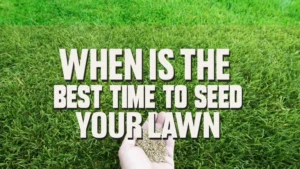



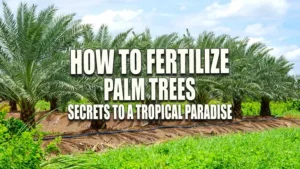



Leave your comment